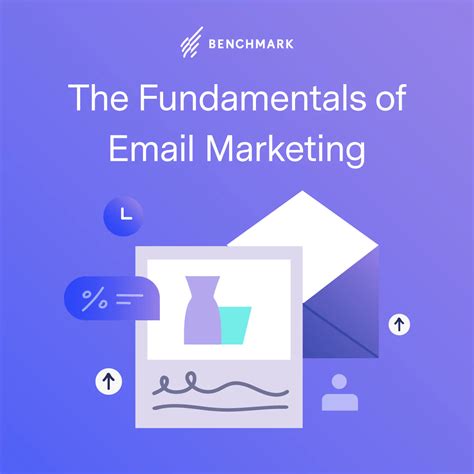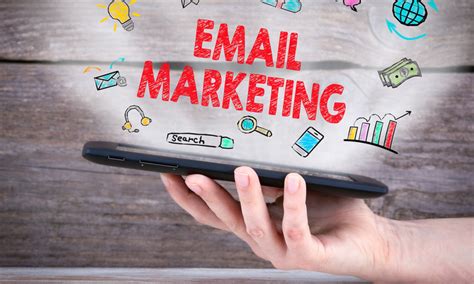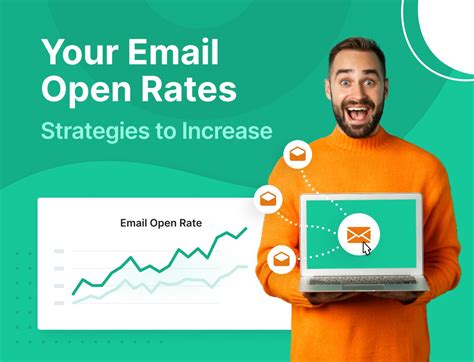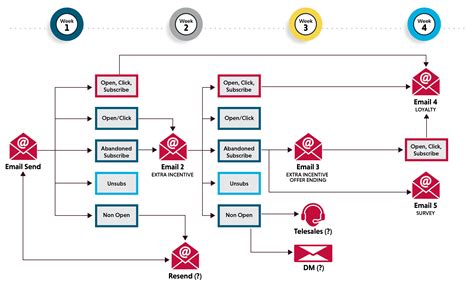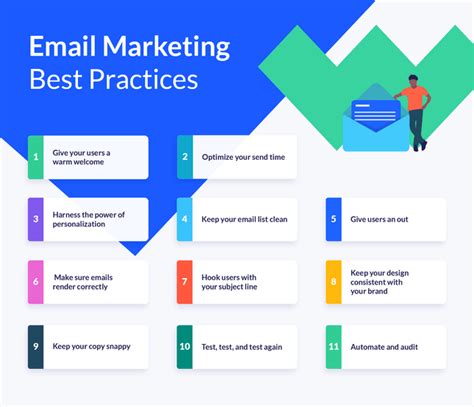Are you looking to unlock the power of direct communication with your target audience? Want to discover the most impactful strategies for engaging and converting your subscribers? Look no further! In this comprehensive guide, we will walk you through the art and science of crafting compelling email campaigns that deliver exceptional results.
Your quest to conquer the digital landscape begins with a well-crafted email campaign. But what does it take to make your message stand out in an overcrowded inbox? How do you spark curiosity and captivate your readers from the subject line all the way to the call-to-action? Fear not, as we bring you the ultimate blueprint to mastering the art of email marketing.
Prepare to embark on a journey that combines creativity, data-driven insights, and advanced techniques. Through the pages of this guide, you'll gain the knowledge and expertise to create personalized and highly targeted emails that resonate with your audience. From crafting captivating subject lines to optimizing your email open rates, we've got you covered every step of the way.
The Strength of Email Advertising

Unlock the potential of electronic communication to expand your business reach and foster meaningful connections with customers. Harness the power of email marketing to build strong relationships, boost brand visibility, and drive sales.
Email Engagement Connect with your target audience on a personal level through well-crafted emails that resonate with their needs and desires. Utilize captivating subject lines, compelling content, and enticing call-to-actions to increase open rates, click-through rates, and conversions. | Email Segmentation Segment your email lists based on demographics, customer behavior, and preferences to deliver highly-targeted messages. Tailoring your emails to specific audience segments allows you to provide personalized content and offers, resulting in higher engagement and greater customer satisfaction. |
Automated Campaigns Leverage the power of automation to streamline your email marketing efforts. Set up automated campaigns triggered by specific events or actions, such as welcome emails, abandoned cart reminders, or post-purchase follow-ups. Automation saves time, ensures timely communication, and improves overall campaign efficiency. | Analytics and Tracking Measure the success of your email campaigns with in-depth analytics and tracking tools. Gain insights into open rates, click-through rates, conversion rates, and other valuable metrics to refine your strategies and optimize future email initiatives. Data-driven decision-making enables continuous improvement and helps maximize the effectiveness of your campaigns. |
Email Personalization Deepen customer loyalty and strengthen brand connections through dynamic email personalization. By incorporating recipient's name, previous purchase history, or tailored recommendations into your emails, you can create a personalized experience that resonates with individual customers and fosters long-term engagement. | Email Deliverability Ensure your emails reach the intended recipients by optimizing deliverability. Familiarize yourself with email service providers' guidelines, implement proper email authentication protocols, maintain a clean subscriber list, and regularly monitor your sender reputation. Protecting your sender reputation helps prevent your email marketing efforts from being hindered by spam filters or being flagged as unwanted messages. |
By harnessing the power of email marketing, you can establish a direct line of communication with your customers, build brand loyalty, and drive revenue. Implement these strategies to take full advantage of this effective advertising channel and propel your business towards success.
Why Email Campaigns Are Vital for Business Success
When it comes to achieving business triumph, deploying effective communication strategies is pivotal. In this digital era, companies with a comprehensive understanding of the significance of email marketing have a competitive edge. In this section, we will explore the fundamental reasons why incorporating email campaigns into your marketing efforts can play a vital role in driving business success.
1. Targeted and Personalized Outreach: With email marketing, businesses have the incredible opportunity to reach their target audience directly. By segmenting your email lists and personalizing your messages, you can engage your customers on a more personal level, catering to their specific needs and interests.
2. Cost-Effective Marketing: Implementing email campaigns is a cost-effective marketing solution for businesses of all sizes. Compared to traditional advertising channels, email marketing allows you to reach a large number of recipients at a fraction of the cost, maximizing your return on investment.
3. Increased Brand Awareness and Visibility: Email campaigns provide an excellent platform for promoting your brand and increasing its visibility. By consistently delivering valuable content and offers through emails, you can establish brand recognition and enhance your credibility among your target audience.
4. Drive Customer Engagement and Retention: Effective email marketing allows businesses to engage and nurture their customers, facilitating repeat purchases and fostering customer loyalty. By creating compelling content and personalized offers, you can encourage your recipients to take action and become active participants in your business success.
5. Measurable Results and Data Insights: One of the significant benefits of email marketing is the ability to track and measure the performance of your campaigns. By analyzing metrics like open rates, click-through rates, and conversion rates, you can gain valuable insights into your audience's preferences and optimize your strategies accordingly.
In conclusion, incorporating email campaigns into your marketing arsenal is essential for achieving lasting success in the business world. The targeted outreach, cost-effectiveness, brand visibility, customer engagement, and data insights provided by email marketing make it an indispensable strategy for any business striving to thrive in the digital landscape.
Creating a Powerful Mailing List: The Path to Effective Email Outreach
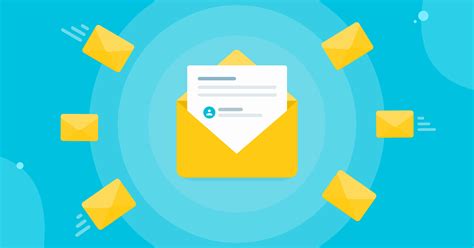
Within the realm of email marketing success lies a crucial component that sets the stage for fruitful campaigns - building an exceptional email list. Elevating your email marketing endeavors hinges on the ability to cultivate a high-quality and engaged audience that eagerly awaits your content. In this segment, we will delve into the art of constructing an effective email list, exploring strategies to attract, captivate, and retain subscribers.
1. Crafting Irresistible Opt-In IncentivesAn irresistible opt-in incentive serves as a magnetic force to entice potential subscribers to share their details willingly. From exclusive content downloads to enticing offers and discounts, these incentives unlock the gateway to growing your email list organically. |
2. Leveraging Landing Pages and Lead Generation FormsLanding pages and lead generation forms act as powerful tools enabling you to capture crucial subscriber information. Design visually appealing and user-friendly landing pages that highlight the value of joining your email list. By strategically placing lead generation forms, you can optimize their visibility and encourage conversions. |
3. Implementing Effective Call-to-ActionsMaximize the impact of your email list building efforts by utilizing compelling call-to-actions (CTAs). Well-crafted CTAs provide clear guidance and emphasize the value subscribers will gain by joining your list. Placing these CTAs strategically across your website and content can significantly improve conversion rates. |
4. Utilizing Social Media for List BuildingSocial media platforms possess immense potential when it comes to expanding your email list. By intelligently leveraging these platforms, you can amplify your reach, engage with your target audience, and lead them to join your email list. Integrate compelling sign-up forms or enticing lead magnets within your social media presence to nurture an engaged community. |
5. Harnessing the Power of Referral ProgramsTap into the influence of your existing subscribers by instituting referral programs that encourage them to share your email content with their networks. Provide incentives such as exclusive rewards, discounts, or early access to further motivate your current subscribers to refer others, ultimately fostering exponential list growth. |
Building an effective email list requires finesse and strategic planning. By implementing these tried and tested methods, you can lay a strong foundation for targeted outreach, ensuring your emails reach the right audience and drive desired results.
Strategies to Attract Subscribers and Expand Your Mailing List
In this segment, we will explore effective approaches that can be employed to entice potential recipients and expand the size of your newsletter subscribers' database.
- Create Compelling Content: Engaging and informative content remains a pivotal aspect in attracting and retaining subscribers. By delivering valuable content consistently, you establish credibility and trust, encouraging visitors to subscribe to your newsletter.
- Utilize Attention-Grabbing Opt-In Forms: Employ visually appealing opt-in forms to capture the attention of your website visitors. Placing them strategically and offering incentives such as free resources or exclusive offers can entice users to subscribe to your mailing list.
- Implement Pop-Up Subscription Forms with Discretion: While pop-up forms can be effective, they should be used judiciously. Utilize exit-intent technology or time-delayed pop-ups to avoid interrupting the user experience and to ensure they are presented at the right moment.
- Optimize Landing Pages: Crafting optimized landing pages with clear call-to-action buttons can significantly boost subscriber conversion rates. Provide concise and compelling information about your newsletter and its benefits to persuade visitors to subscribe.
- Offer Irresistible Lead Magnets: Create valuable lead magnets such as e-books, checklists, or templates that align with your target audience's interests. By offering these free resources in exchange for email addresses, you can attract quality subscribers who are genuinely interested in your content.
- Run Contests and Giveaways: Holding contests or giveaways can generate excitement and motivate individuals to subscribe to your newsletter. Promote these activities on various platforms and require participants to provide their email addresses to enter the competition.
- Implement Social Proof: Display social proof such as testimonials, reviews, or statistics showcasing the benefits and positive experiences of existing subscribers. This helps build trust and credibility, encouraging potential subscribers to join your email list.
- Utilize Personalization: Tailor your emails to each subscriber's preferences and interests. By segmenting your mailing list and sending targeted content, you enhance engagement and encourage subscribers to stay connected with your brand.
- Promote Newsletter on Multiple Channels: Leverage different marketing channels, including social media, blog posts, podcasts, or guest posting, to promote your newsletter. Highlight the unique advantages of subscribing to your mailing list to attract potential subscribers from various sources.
Implementing these strategies will empower you to effectively attract subscribers and relentlessly expand the reach of your email list. Recognize the importance of testing and adapting your methods to optimize results and achieve long-term success.
Creating Engaging Email Content
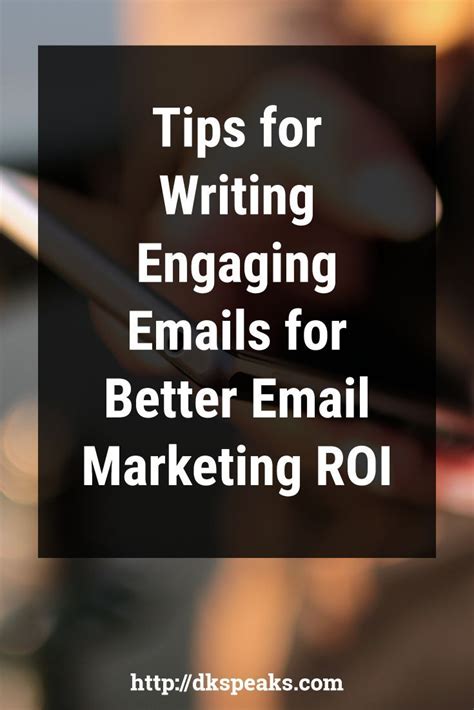
When it comes to crafting email content, the key is to captivate your audience and elicit a response. In this section, we will explore effective strategies to create compelling emails that grab attention, resonate with readers, and drive desired actions.
Know Your Audience
- Understand the demographics, preferences, and interests of your target audience.
- Segment your email list to tailor content based on different customer personas.
- Use language and tone that aligns with your target audience, whether it's formal, casual, professional, or conversational.
Create Attention-Grabbing Subject Lines
- Craft concise subject lines that pique curiosity and make recipients want to open your emails.
- Include personalized elements like the recipient's name or location to enhance engagement.
- Avoid using spam trigger words or deceptive techniques that might land your email in the spam folder.
Keep the Content Concise and Easily Digestible
- Avoid overwhelming readers with lengthy paragraphs or excessive information.
- Use bullet points, numbered lists, and subheadings to break up content and improve readability.
- Highlight key points or important information to ensure it stands out.
Use Captivating Visuals
- Incorporate visually appealing images, graphics, or videos that support your message and enhance overall presentation.
- Ensure your visuals are relevant, high-quality, and optimized for different devices and email clients.
- Consider including alt text for images to provide context for visually impaired readers.
Personalize and Customize Emails
- Add a personal touch by addressing recipients by name and tailoring the content to their specific needs or preferences.
- Make use of dynamic content to display different versions based on recipient data, such as location or past interactions.
- Include call-to-action buttons or links that direct users to personalized offers or relevant landing pages.
A/B Test and Analyze Results
- Regularly test different elements of your email content, such as subject lines, visuals, or calls-to-action.
- Analyze metrics like open rates, click-through rates, and conversion rates to identify what resonates best with your audience.
- Use the insights gained from testing to refine and optimize your email content for better performance.
By implementing these strategies, you can create email content that captures your audience's attention, builds trust, and drives meaningful engagement. Remember to continuously adapt and experiment with your approach to meet the evolving needs of your subscribers.
Tips for Crafting Compelling and Persuasive Emails
When it comes to email communications, there are certain strategies you can employ to capture your audience's attention and drive them to take action. In this section, we will explore some tips and techniques for creating engaging and persuasive emails, ensuring that your messages resonate with your recipients and compel them to respond.
1. Personalize Your Emails: Tailoring your emails to individual recipients can significantly increase engagement. Use personalization tokens to address your recipients by their name and segment your audience based on their preferences and interests. This will make your emails feel more personalized and relevant, increasing the chances of a positive response.
2. Craft a Compelling Subject Line: The subject line is the first thing recipients see in their inbox, so make it attention-grabbing and compelling. Use action-oriented language, create a sense of urgency, or pose a thought-provoking question to entice your audience to open your email and find out more.
3. Keep it Concise and Clear: In a world filled with information overload, it's crucial to keep your emails concise and to the point. A clear and well-structured message is more likely to hold your audience's attention and convey your main message effectively. Use short paragraphs, bullet points, and headings to break down the content and improve readability.
4. Use engaging and conversational language: To make your emails more engaging, use a conversational tone that resonates with your audience. Avoid jargon and technical language, and instead, opt for a friendly and approachable style that feels like a conversation with a trusted friend.
5. Incorporate persuasive elements: To persuade your recipients to take action, incorporate elements such as compelling storytelling, social proof, and persuasive calls-to-action. Use testimonials, case studies, and statistics to show the value and benefits of your product or service, and clearly communicate the desired action you want your audience to take.
6. Test and optimize: A/B testing different elements of your emails, such as subject lines, content, and call-to-action buttons, can help you understand what resonates best with your audience. Continuously analyze the performance of your emails and make data-driven optimizations to improve engagement and conversion rates.
By implementing these tips and techniques, you can enhance the effectiveness of your email communications and drive better results. Remember, crafting engaging and persuasive emails is an ongoing process that requires experimentation, analysis, and continuous improvement.
Creating Captivating Templates for Email Campaigns

In today's digital landscape, it is crucial to design visually appealing and engaging email templates that grab the attention of your target audience. Crafting captivating email templates can significantly enhance the success of your email marketing efforts, helping you to effectively communicate your message, increase click-through rates, and ultimately improve your conversion rates.
When designing eye-catching email templates, it is important to consider various factors that contribute to their overall appeal. By incorporating attention-grabbing visuals, concise and compelling content, and seamless navigation, you can create templates that leave a lasting impression on your recipients.
An effective starting point is to use vibrant and visually appealing colors that align with your brand identity. Colors have the power to evoke emotions, so choose hues that resonate with your message and create a sense of harmony and excitement. Additionally, visually striking images can add depth and engagement to your emails, as long as they are relevant to your content and optimized for quick loading.
Another crucial aspect of captivating email templates is the use of concise and compelling content. By keeping your text clear, concise, and focused on the benefits your audience will receive, you can effectively communicate your message and drive action. Utilize headings, subheadings, and bullet points to break up information and make it easier to digest. Remember to use persuasive language that speaks directly to the desires and pain points of your target audience.
In addition to captivating visuals and compelling content, seamless navigation is key to engaging email templates. Make sure that your templates are mobile-friendly and responsive, as a significant portion of recipients access emails on their smartphones or tablets. Optimize your templates for easy scrolling, clickable buttons, and clear call-to-action (CTA) buttons that guide your audience towards taking the desired action.
Incorporating these key elements into your email templates will help you create visually appealing and captivating designs that capture the attention of your audience and drive the desired results. With careful consideration of colors, images, content, and navigation, your email campaigns will stand out from the rest and leave a lasting impact on your subscribers.
- Use vibrant and visually appealing colors that align with your brand identity.
- Incorporate visually striking and relevant images.
- Create concise and compelling content that focuses on benefits.
- Utilize headings, subheadings, and bullet points to improve readability.
- Ensure seamless navigation with mobile-friendly and responsive designs.
- Optimize templates for easy scrolling and clickable CTAs.
Creating Engaging and Aesthetically Pleasing Emails
When it comes to email marketing, the visual appeal of your emails plays a crucial role in capturing the attention of your recipients. Implementing best practices for creating visually appealing emails can significantly enhance the effectiveness of your email campaigns.
In this section, we will explore some key tips and techniques that can help you design engaging and aesthetically pleasing emails that leave a lasting impression on your subscribers. By focusing on elements such as color, layout, typography, and imagery, you can create visually stunning emails that effectively communicate your message and drive the desired actions.
- Choose a cohesive color scheme: Selecting a harmonious color palette that aligns with your branding can add visual coherence to your emails. Consistency in color helps in creating a unified and professional look.
- Optimize for mobile devices: With the majority of email opens happening on mobile devices, it is essential to ensure that your emails are responsive and display correctly on various screen sizes. Use responsive design techniques to adapt your email layout to different devices.
- Balance text and images: Strike a balance between textual content and visual elements in your emails. Use concise and compelling copy that complements the images, ensuring that the overall layout remains visually appealing and easy to read.
- Utilize effective typography: Select appropriate fonts, sizes, and styles that enhance readability and align with your brand's identity. Ensure that your chosen typography is consistent across different devices and email clients.
- Incorporate eye-catching imagery: Visuals are powerful tools for capturing attention. Use high-quality images that are relevant to your email content and align with your brand's aesthetic. Optimize image sizes to maintain fast loading times.
- Create a clear and concise layout: Organize your content using a clear hierarchy, ensuring that important information is easily scannable. Use headings, subheadings, and bullet points to break up the text and improve readability.
- Add interactive elements: Engage your audience by incorporating interactive elements like animated GIFs, interactive buttons, or sliders. These interactive elements can make your emails more dynamic and engaging.
By following these best practices for creating visually appealing emails, you can increase the impact of your email marketing campaigns. Remember to test your emails across different email clients and devices to ensure a consistent and visually pleasing experience for your subscribers.
Maximizing Results by Streamlining Email Campaigns

In today's fast-paced digital landscape, optimizing email campaigns is essential for achieving maximum results. Fine-tuning your approach to email marketing can significantly improve the effectiveness of your communication and yield impressive outcomes. This section will explore key strategies and techniques to enhance the performance of your email campaigns, ensuring that you capture your audience's attention and achieve your desired goals.
1. Crafting Engaging Subject Lines
One vital aspect of optimizing email campaigns lies in crafting irresistible subject lines. The subject line serves as the gateway to your email and can significantly impact open rates. By using enticing language, employing action-oriented verbs, or incorporating personalization, you can pique your subscribers' curiosity and drive higher engagement.
2. Segmentation and Personalization
Personalization is the key to establishing a meaningful connection with your subscribers. By segmenting your email list based on demographic information, purchasing behavior, or previous interactions, you can tailor your content to cater to specific needs and interests. This level of personalization fosters a sense of exclusivity and relevance, increasing the chances of conversion.
3. Consistent Branding and Design
Creating a consistent visual identity is vital for enhancing brand recognition and establishing trust. By employing a cohesive design that incorporates your brand colors, logo, and typography throughout your emails, you establish credibility and reinforce brand recall. Additionally, optimizing email templates for mobile devices ensures a seamless user experience, regardless of the device your subscribers use to access their emails.
4. Compelling and Actionable Content
The content within your emails should be compelling, concise, and action-oriented. By focusing on delivering value, addressing pain points, and offering clear calls-to-action, you can encourage subscribers to take the desired actions. Utilizing persuasive copy, attention-grabbing visuals, and relevant links can contribute to higher click-through rates and ultimately drive conversions.
5. Testing and Optimization
Continuously testing and optimizing your email campaigns based on real-time data is crucial to maximizing results. A/B testing different subject lines, layouts, or call-to-action buttons can provide valuable insights into what resonates best with your audience. By analyzing metrics such as open rates, click-through rates, and conversions, you can make data-driven decisions and refine your email marketing strategy for optimal performance.
By implementing these strategies to optimize your email campaigns, you can unleash the full potential of your email marketing efforts and achieve exceptional results. Remember, each component of your email campaign should align with your overall marketing objectives and capture the attention of your target audience, creating a lasting impression that drives engagement and conversions.
FAQ
What are some effective email marketing strategies?
Some effective email marketing strategies include personalizing your emails, segmenting your audience, writing compelling subject lines, creating eye-catching designs, and including a clear call-to-action.
